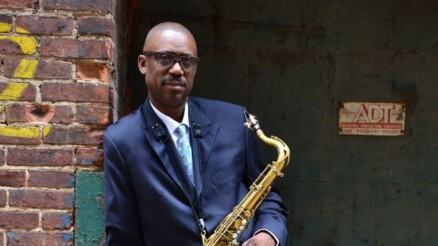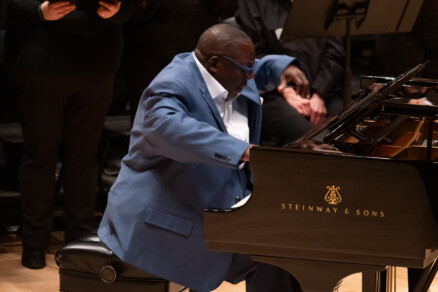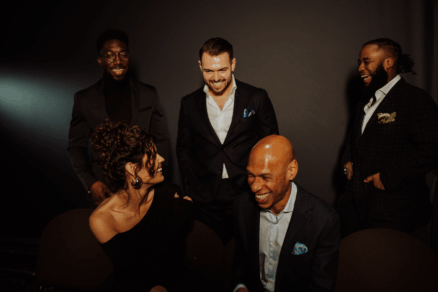Live review | Sonny Rollins: No retirement

by Luke Stewart
Avant music editor
Sonny Rollins
Kennedy Center
Monday, Oct. 10, 2011
Sonny Rollins’s Monday night concert took place at what is now his regular D.C. performance venue: the Kennedy Center. Even in a town that tends to shut down early on a weeknight, the seats of the great hall were near full. That is because among all living jazz masters, perhaps none is more revered, more seasoned or more influential than Mr. Rollins.
In many ways, he is the embodiment of multiple jazz stereotypes. He was the Young Lion, at the right place and time in history (New York City in the 1940s) to have played with and influenced virtually every major figure in the bebop era. He was the lonely artist, having taken a highly romanticized hiatus from public performance, dedicating his time to solitary practice on the Williamsburg Bridge. He was the crossover sensation, having recorded a series of successful albums with strong tinges of jazz-rock fusion. And now, he is quite simply the jazz master. A strong sense of reverence was in the audience on Monday, and the historical weight of his very presence shone through with every note.
Rollins was not the only legend on the stage that night. He was, to great delight, joined by Bob Cranshaw on a strangely shaped, compacted upright bass. Peter Bernstein, a Jim Hall protege, was on guitar; Kobie Watkins, a veteran on the Chicago scene, played drums; and on percussion was the hard-working sideman Sammy Figueroa.
As the performance began, it was plain to see that time had taken its toll on Rollins; he entered the stage in a sort of hunched march. It seemed to have little effect on the sound from his horn, though, or on his mannerisms. The band started with a lively calypso groove à la “St. Thomas,” and a very animated Rollins strolled back and forth on stage, playing in his always-effortless style while gesticulating to the band with his hands and his horn.
His tone is still strong, and perfectly in tune, without a sour note to be found. As a lead instrumentalist, he never sounded as if he was taking a solo. Rather, it felt as if he was playing from within the ensemble, coasting along in the groove while emphasizing the rhythm with melodic extrapolations. His lines were still modern, playing tricky passages with ease and trading not just the traditional four bars, but also spontaneous sixes and twos, with his band mates.
The second tune, another groove-based vamp but with more subtle swing than the first, simply brought the house down. The playing from the band, still warming up, raised the level of musical intensity almost to the point of ecstasy. The crowd burst into a standing ovation even before the tune was finished.
Rollins then performed a ballad, which was classic Sonny. His blustery tone carried throughout the hall while he bent down, as if to give the front row a personal show. It was during this song that I experienced a personal moment of overwhelming reverence and awe. I began to reflect deeply on the man’s legacy. He is a living representation of a jazz warrior, one who has survived through changes in the taste, technology, and industry of music, and is now thriving.
Throughout the night, Rollins channeled his energy into a well-rounded performance. The band grooved in swing, Latin and calypso styles; it waltzed; and it took some things slow. At the conclusion the audience gave a full standing ovation as the master hobbled off the stage, clearly not returning for an encore. Still the applause continued, as if to collectively express the sincerest thanks to a man who has forged the way for so many.
Even as a hunch-backed octogenarian, Rollins still is paving a way for future jazz musicians, inspiring them with his example of a musician who stayed true to his art. He proves that for an artist, there is no retirement.
bebop, Bob Cranshaw, calypso, DC, DC jazz, Foggy Bottom, jazz, Jim Hall, Kennedy Center, Kobie Watkins, legends, Peter Bernstein, Sammy Figueroa, Sonny Rollins, St. Thomas, Washington




